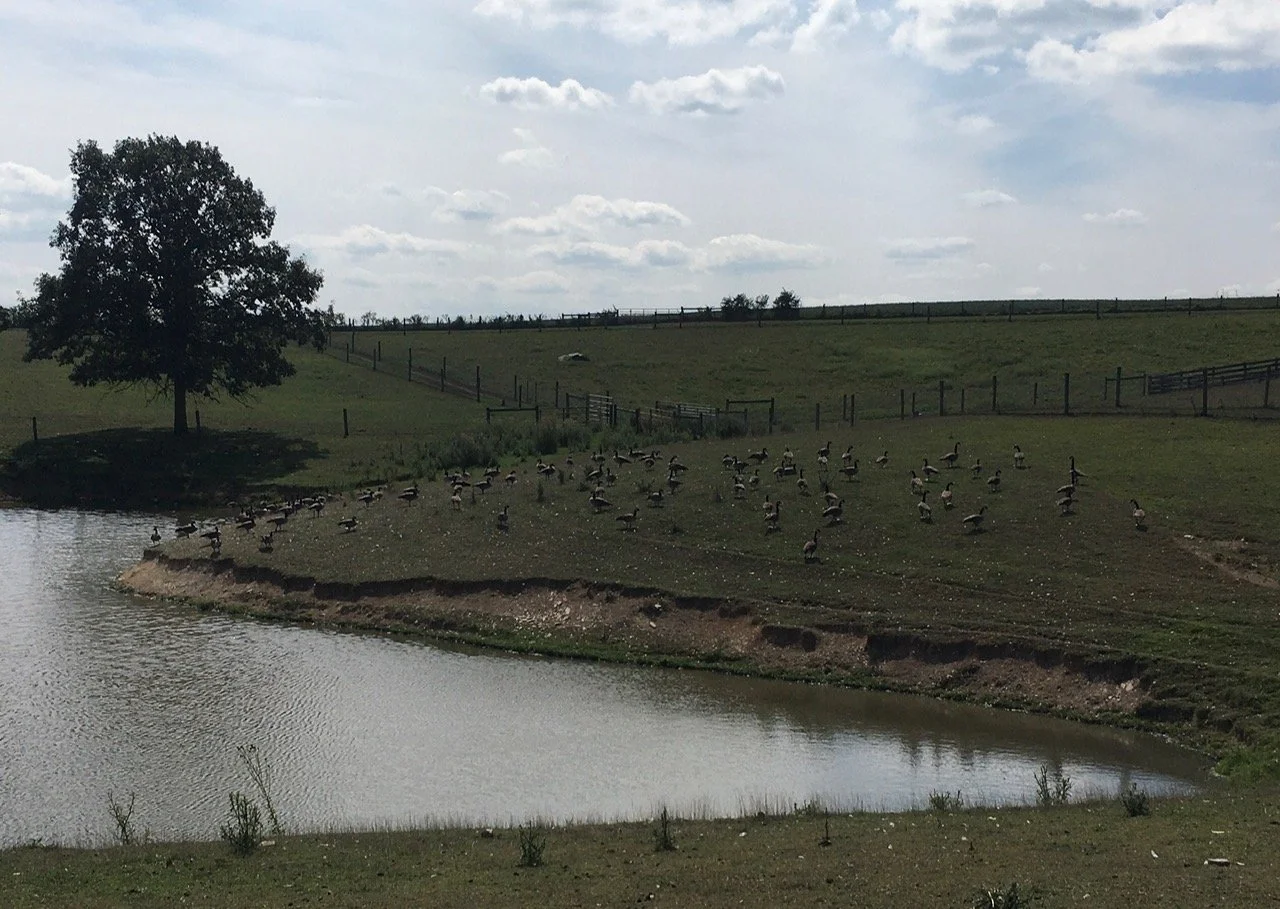Signs Of Change
These are not my honkers. I know the year-round Canada Geese who frequent the farm pond along with the other fair weather residents that arrive in the spring and stay for summer. My geese are much larger than the ones who make the trip south each season. At most, there will be a dozen who hang out all winter. The migratory geese, however, are large flocks of hundreds of birds, their cacophonous calls signaling their arrival as they spiral down from the sky.
In the last week I’ve begun seeing subtle changes in the cast of characters which make up the wildlife on the farm. The barn swallows have disappeared. I’ve made it a point to protect their nesting areas from over-zealous workmen who want to clean up the rafters of the barn.
The hummingbirds are still here but draining the feeders twice as fast in preparation for their 2,000 mile trip to Central America. Territorial to begin with, the flashy male Ruby Throated variety has become downright aggressive toward anyone going near their feeders—including me. They hovered inches away from my face while I hung freshly filled feeders and one ended up tangled in my hair. Neither of us where happy about it but we both escaped unscathed.
This week the herons also took leave. I’ll miss their long, dangly legs trailing behind them as they fly between the pond where they hunt for frogs and small fish to their nest down by the run. More proof that the dinosaurs didn’t go extinct; they turned into birds. As a farmer who has kept poultry for over thirty years, I say this with all seriousness. Birds might be beautiful, but they are vicious killers and voracious feeders. I won’t tell you what the predatory Black Buzzards do to young lambs and goats. It’s downright Texas Chainsaw Massacre.
The birds aren’t the only ones on the move. The hayfield is awash with flashes of orange as the fourth generation of Monarch butterflies prepare to head down to Mexico where they will lay their eggs and begin the cycle all over. Shorter days, cooler temperatures, and dwindling milkweed as the plants complete their lifecycle signal it’s time to go. Soon the milkweeds’ fat pods will release their gossamer fluff carrying the seeds that will grow for next year’s Monarchs, the children, grandchildren, great-grandchildren, and great-great grandchildren of the ones leaving now.
The neighbors who make the hay tell me every year that the hayfields need to be sprayed to get rid of all that milkweed and I politely decline. Maybe I should give them a copy of Flight Behavior by Barbara Kingsolver. As long as the Monarchs and the migratory birds appear each spring I breathe a deep sigh of relief that the ecological meltdowns happening throughout the world haven’t arrived at my doorstep.
Perhaps the most telling sign that summer is ending are the customers who have fled elsewhere for the season are returning to the markets. Labor Day weekend, the harbinger of all things pumpkin spiced orange is upon us. There are plenty of fresh fruits and vegetables available, but last week one of the seasonal crop vendors at market said they were glad things were slowing down on the farm. But the surest sign of all that fall is on my doorstep, when I roll out to market each week I now set off all the motion-detecting spotlights on the driveway.

